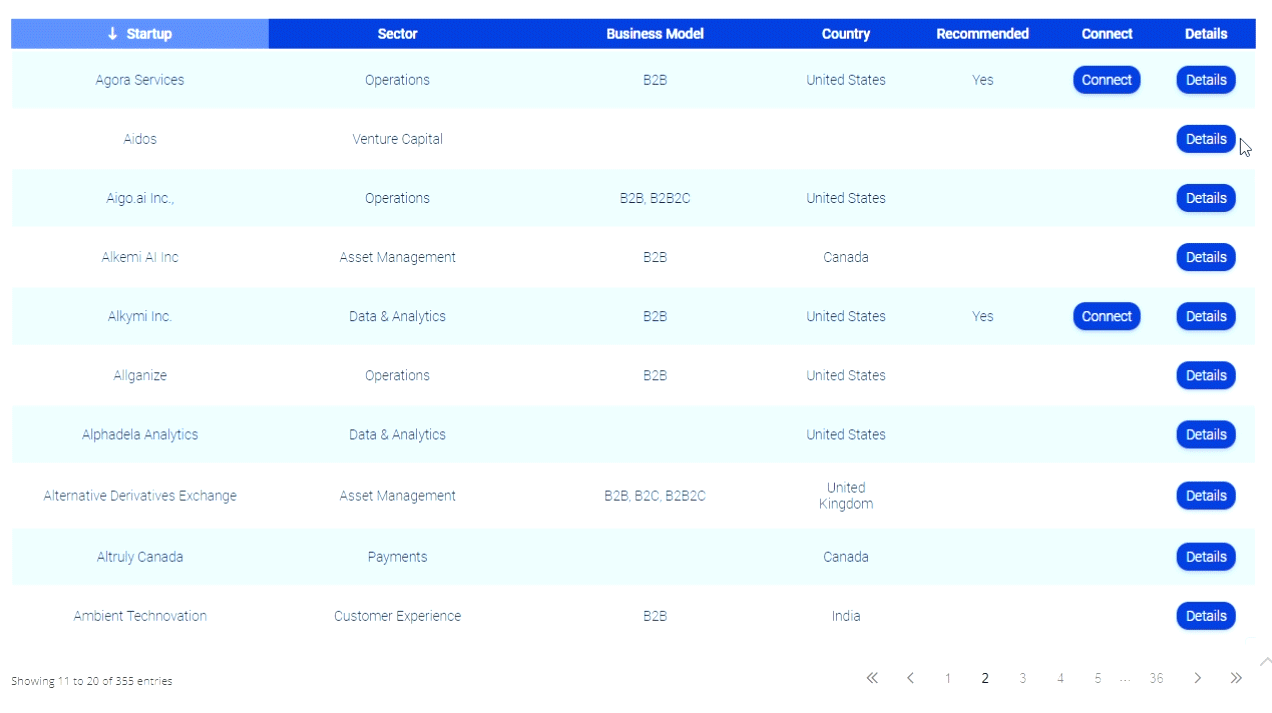How to Create a Unicorn in 4 Difficult Steps
I am using Unicorn as short hand for a $ billion of value created in a few years. The word has clearly been abused and over used and I believe that there are far fewer Unicorns than advertised (as discussed here). However the U word is still a reasonably useful short hand in our attention deficit world and, more importantly, in a world where billions are entering a global middle class armed with mobile phones, the potential for Unicorn level value creation has never been greater.
Very, very, very few entrepreneurs will create a Unicorn. The headline says 4 difficult steps. However many more entrepreneurs will create potential Unicorns and cash out earlier because most entrepreneurs do not have the ability to manage the wrenching leadership pivot as you go through these gates. A potential Unicorn is obviously worth less than a realized Unicorn but the potential does still have a lot of value and you can realize that value potential at each of the 4 gates.
Daily Fintech Advisers helps entrepreneurs go through these 4 gates. The entrepreneurs maybe working in classic venture funded Fintech startups or Big Techs moving into Fintech or Big Banks moving into Fintech who need to create a Unicorn every year. Whatever the organizational model, these gates remain the same.
Think of these Four Gates like a sales funnel, with lots at the top and very few at the bottom:
Gate #1: Conceptual Clarity (aka the idea).
Gate #2: Prove the Concept (aka Product Market Fit).
Gate #3: Make it work as a business.
Gate #4: Expand and Dominate (aka IPO).
Wrenching Leadership Pivot
It takes totally different leadership skills to go through each of these four gates. Few founders have all the four different skills needed, which is why so many ventures fail as they attempt to pass through these gates. Even harder is the fact that the skills, techniques and attitudes that make you successful going through one gate are exactly the opposite of the skills, techniques and attitudes that make you successful going through the next gate.
Each Gate requires a wrenching pivot.
This is like a ski slalom race where you have to change from downhill to snowboard to telemark as you go through each gate.
Gate #1: Conceptual Clarity (aka the Idea).
Everybody has an idea for a world-changing company worth $ billions. Some people have multiple ideas. As the old saying goes “ideas are a dime a dozen”.
However the Idea does matter. The Idea behind Uber and AirBnB and Lending Club and Facebook was good.
There has been a lot of fruitless debate about whether concept or execution is more important. This debate is silly, because you must have both. A bad concept that is brilliantly executed will be nothing more than a tough uphill slog with relatively little reward at the top. On the other hand, a brilliant concept with weak execution is nothing more than “woulda, coulda, shoulda”.
Conceptual clarity must tick these 4 boxes:
- Massive market. A small niche might make for a great venture that can be bootstrapped, but Unicorns need massive markets. The good news for entrepreneurs is that even if you don’t master the wrenching leadership pivot challenge as you pass through these gates, if you get traction in a massive market you will have exit opportunities from companies in that market with the scale to realize the value potential that you have created. If you go after a small niche you will be a “bolt on acquisition”. If you go after a massive market you will be a “platform acquisition” and the multiples are totally different between bolt on and platform. What confuses some entrepreneurs is the first wrenching leadership pivot as you go through Gate # 2 when you have to focus not just on a small market but on a ridiculously tiny market.
- Massive disruption hitting that market. This is the kind of disruption that creates an existential threat to the major players in the market – think of Skype vs telephone companies or Google vs traditional advertising or AirBnB vs traditional hotels. If it is not disruption of that scale, the existing vendors will add the features they need to stay competitive (“adding that feature” may mean acquiring your venture, so this is fine for ventures that will be acquired before they go through all these gates).
- You have a 10x proposition enabled by disruptive technology. You have to be 10x better or faster or cheaper than the incumbents. That seems like a high bar, but it needs to be this big to overcome the start-up risk that you are asking customers to take. Tactically you may start by offering say 3X knowing that as the technology rolls onwards you have much more in reserve, but you must see where that 10x is coming from.
- Timing. Watch this great TED talk by Bill Gross of IdealLab on the “single biggest reason why startups succeed. The punch-line – timing matters more than Idea, Business Model, Team or Funding. I would phrase it slightly differently – an idea where the timing is wrong is not a good idea. I have seen and worked on unique ideas that failed and years later seen somebody create a valuable business from that idea. The timing may relate to something like how many people have access to the Internet, or bandwidth or economic necessity or a technological breakthrough (such as blockchain). You need total clarity on the “why now?” question.
Here are the two things you do NOT need to have at this stage:
- A strategy that seems viable to most people.Most great ventures look totally ridiculous to most sensible people in their founding days. After you have passed through Gate #2 a few investors will take notice. After Gate #3, lots of investors are clamoring to get on board and you can happily worry about bubble valuations. After Gate #4, everybody always knew that the idea was brilliant because hindsight is always 20/20. However at Gate # 1, nobody cares about your venture and most people will think it is a lousy idea. You do need a couple of smart people to believe in the idea, whether they be co-founders or investors. But get comfortable with the fact that most people think you are crazy. Unless you actually are crazy, there will be times when you doubt yourself and when you think most people are right.
- Any proof that any of the three things on that checklist are true. Anybody who asks for proof at this stage does not know how this works and does not deserve to be your partner. Proof only comes later.
Many great entrepreneurs have conceptual clarity but are weak at articulating it, or are too busy executing on the next phase. At this stage nobody cares about your concept. Only after you have passed the next gate does anybody care.
There is no exit opportunity at this Gate.
There is lots of free content and free software and free data that entrepreneurs can use at this stage (when they have no cash to spend). Daily Fintech is one source of free content for Fintech entrepreneurs at this stage.
Gate #2: Prove the Concept (aka Product Market Fit).
This is the “fit to today’s market” phase. This is also what VCs call “traction”. This is where the failure rate is massive.
This is the Product Market Fit chasm.
Most ideas fail at this stage. Investors understand this and that is why nobody wants to fund the pre PMF stage. This is why Accelerators have value; they help guide ventures to the PMF stage.
The failure rate of pre PMF ventures is massive. Creating the first product is now so cheap that it is really just part of Gate # 1; the product is simply a way to illustrate the idea. Only a tiny % of Y Combinator applicants get into the program and only a small % of ones that graduate create a valuable business.
The wrenching leadership pivot getting to Gate # 2 is from massive market to tiny market.
Peter Thiel explains this very well in Zero to One when he describes PayPal going after the tiny (at the time) market of power sellers on eBay.
This where you focus on the immediate needs of customers who are ready to make a commitment now, leaving out all the futuristic, big picture stuff which would only scare potential customers. These customers will be ready to do that because they have a real problem to solve and that need is not being solved because they represent a tiny market that established companies are not interested in.
At launch, all the market will see and all the entrepreneur is thinking about is that tiny market.
However, somewhere in the back of their mind, the great entrepreneurs carry a conceptual vision that is a lot bigger than the immediate solution that they offer to get through Gate # 2.
Many entrepreneurs stumble at this point because they are not consciously making the transition from thinking about the future to executing on the present.
The future that you envisage may or may not come to pass. If it does, you may strike gold. However, that won’t help you get traction with customers today. All those customers are concerned about is problems they have today. Your customers maybe happy to “shoot the breeze” about the future, but they will only spend their money and/or attention on problems that they have right now.
This process of focusing 100% on the present day needs of a tiny market is a vital step in turning dreams into reality. It is also 100% opposite to what you do to get through Gate #1.
In B2B markets, getting through Gate #2 means getting the first three paying reference customers. This is a tough job because most customers prefer to wait until you have these three references before committing; one way to drive enterprise software founders crazy is to ask them about this chicken and egg problem. These need to be real enterprise-wide deployments with customers paying 6 figures. A few logos of customers deploying the software in one small area and paying a few thousand dollars won’t make the grade. Lots of enterprise software ventures reach this stage and become cash flow positive without raising any VC, but then stumble at the next Gate. The difficulty of getting these first references is why so much of the innovation in enterprise IT is coming from ventures using B2C techniques to slip into enterprises “under the radar” such as Slack.
In consumer ventures, getting through Gate #2 means month to month growth rates in attention. I am using the word attention because the specific metrics such as page views, uniques, downloads, active users tend to change a lot as people “game” the old metrics.
If you fail to get to Gate # 2, you can still exit through an Acquire-Hire deal. Investors get some or all money back and the optics of an exit. The founders get a pay check and a chance to learn more and make their dreams happen within a larger company.
If you pass Gate # 2, you typically have two opportunities:
- A Series A VC round.
- A small Trade Sale Exit.
Trade Sale acquirers know that the price will go up after a VC round. They might be happy with this if the VC round leads to growth and reduction in risk. Or they may want to avoid the risk of a competitor acquiring you. Series A investors understand this and that is why they will sometimes allow founders to do some personal de-risking by selling some shares into this round; it is in the investor’s interest for the founders to be ready to “shoot for the moon”.
Entrepreneurs have to assess the choice between Series A and Exit based on age, motivation and the offers coming in. If you get to Gate # 2, you have choice.
If you bootstrapped past Gate # 2, the value you will get from the trade sale will still be life-changing, because you don’t have to share the spoils with investors. However the big money, the fame and fortune, is reserved for those who make it to Gate # 3. One way to look at this is, don’t raise VC unless you are determined to make it past Gate # 3.
Consumer ventures can exit for great multiples at Gate # 2 without revenue as deals like Instagram and WhatsApp show. However these deals are the exception that proves the rule. It only ends that way if you get massive growth in attention at a time when a big acquirer is facing massive disruption (think Facebook facing disruption from mobile and thus paying a big premium for both Instagram and WhatsApp). Fortunes are lost trying to emulate this when those rare stars are not aligned.
Gate #3: Make it work as a business.
In Gate # 2 you got Product Market Fit in a tiny market. You cannot build a business in that tiny market. It is just a stepping stone to a real market that that you go for in Gate # 3.
This is the “make it work as a business” phase. This is the point where you will need the skills and techniques that I describe in Mindshare to Marketshare. You will need to scale your sales and marketing with replicable processes without losing the passion and creativity that got you to this Gate.
This is another wrenching leadership pivot. During the PMF phase, you do things that don’t scale. You do whatever it takes to get customers including things that are totally uneconomical at scale.
All of that changes when you get to Gate # 3. Now you need to make sure the unit economics work, that Customer Acquisition Costs are OK. You may defer profits and cash flow if your investors support this, but the unit economics have to be right. You have to scale revenue but it must be the right type of revenue (high margin, predictable, low customer/partner dependency etc).
Daily Fintech Advisers specializes in helping ventures at this stage in their growth through Market Development Services. This is when you start to make acquisitions, move into adjacent markets and create distribution partnerships.
For consumer web ventures, the big obstacle at this Gate is proving a scalable and profitable revenue model. There are now trade offs and conflicts to be managed between the needs of free users and the different needs of paying customers (e.g. advertisers) and that is often hard for the entrepreneur who won in the last Gate through their self-proclaimed single focus on user experience. This becomes a more acute problem as ad blockers become mainstream on iPhones with IOS9.
Businesses that make it through this phase are “in the catbird seat”. You have a profitable, scalable business that you can grow with internal resources as long as you like. You will be fending off acquisition offers all the time, both from financial buyers (private equity funds) as well as strategic buyers. You get to choose when and who you sell to. Or you may choose to go all the way to Gate # 4.
Gate #4: Expand and Dominate.
This is the post IPO sustainable public company phase. (Yes, that could be a Private IPO, but that is a technicality relating to market structure and the metrics of success are the same whether investors are operating in a public or private market).
The “expand and dominate” Gate #4 is about pivoting back to that original founding conceptual clarity, of realizing the big picture potential.
All the long years of the earlier Gates are simply laying the groundwork to make this possible. This is another wrenching pivot. The skills, techniques and attitudes that got you through Gate # 3 are all about focusing on a niche, constraining ambitions for the future while concentrating on the immediate opportunities. If you have done a good job in the transition through Gate # 3, you will be able to leave the quarter-by-quarter growth to a highly competent team. That frees the founder CEO to focus on expanding into adjacent markets and dominating the market.
Dominate may sound harsh to some ears, but it is what public market investors expect, that is what the high valuations given to fast growth tech companies are based on. Another way of saying this is what Peter Thiel describes as natural monopolies in Zero To One, the kind of monopolies created by network effects (think Google, Facebook, Uber, AirBnB).
Entrepreneurs that make it through Gate # 2 get the opportunity to exit and that can be a good result if they have bootstrapped to that point. Entrepreneurs that make it through Gate # 3 get the opportunity to exit and that is a good result for founders, investors and management (this is when those stock options become life-changing). Gate # 4 is for Unicorns with fame as well as fortune (founder faces on the front page and on TV).
The changing game of Innovation Capital
The Silicon Valley VC orthodoxy for a long time was that no founder has the right profile to make it through all the 4 Gates. Therefore VCs historically tried to either sell the business at each of these Gates or find professional management to replace the founder CEO. (I refer to the Founder CEO as the key, because even though there are often co-founders, there is usually one of them who emerges as the leader). That conventional wisdom has been overturned today as we witness the failure of “professional managers” from big companies to drive the growth of start-ups. When you look at the really great success stories, you see one highly charged entrepreneur who takes it all the way through these 4 Gates – think of Gates, Ellison, Page, Zuckerberg, Bezos, Jobs, Benioff, Kalanick, Chesky. Their ability to pivot and personally change at each of these Gates is the story of their success. It would be crazy to see these entrepreneurs in their founding days and envisage them as the CEO of a multi-billion $ publicly traded company. Yet some of them actually do that.
This is now the accepted wisdom in Silicon Valley. However the impact of this change has not yet been felt on the VC industry.
The current VC fund structure, with its need for exits to return money to the Limited Partners, is not conducive to backing entrepreneurs all the way through these four Gates.
So we are likely to see some innovation in this area, because the reward for backing entrepreneurs through all four gates is very big.
Daily Fintech Advisers helps Fintech entrepreneurs through these 4 gates though our Market Development Services. The entrepreneur could be working in a big company (for example a Big Bank or a Big Tech moving into Fintech) or in a Scale Up (a venture moving from Gate # 2 to Gate # 3).
by Bernard Lunn











